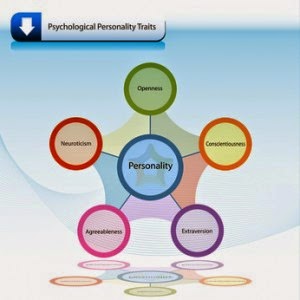Friday's thoughts 27 March
Who You Are and
How Your Seen.
With one more
Friday afternoon spent working in college, I could get a bit more work done.
Today was a particularly interesting progression into my 'personality work'. I
found Marriyah working at college, so I got her to complete several personality
tests that could help me find out more about her personality, but also if I see
her personality in the same way as she does.
First of all, I
myself completed the test answering the questions with Marriyah in mind. I then
had Marriyah take the same test and I could then compare the results of the two
and see if there was any similarities.
The
results were
very interesting and different to what I thought. Comparing the two
tests, I
found that they were different in many of the traits. The biggest
differences
was the organisation skills and relaxation traits. Although I thought
that
Marriyah was a calm and organised individual, she is actually very
stressed and
disorganised. I think the reason I though of her in this way was because
on the
surface she has a calm personality and even in stressful situations she
still
seems to maintain this. When I worked with her in fine art I noticed her
making
lists of things to do and timetables. As I saw this I instantly thought
that
Marriyah was a organised individual. That along with the fact that I see
her
sketchbook normally full of work, it lead me to believe that Marriyah
was calm and organised. I was wrong. In fact, having the results of the
personality test from her, and talking to her more, I found out that
although
she appears to be organised and calm, she is in fact the opposite. It
was just
on the surface. Underneath she was stressed and disorganised.
This was one of
the main differences in the test. I always thought of Marriyah as a calm person.
However, the one thing that I did identify was her shyness. I think this was an
important part and made a big impact on the test. If Marriyah had a more outgoing
personality, then I think I would of got to know her a bit more and I might of
noticed different parts of her personality. I think if someone's shy or
outgoing, it tends to be one of the things we first notice about their
personality.
It takes longer
to find out their personality if someone who is shy, while if someone is more
outgoing, they would show off more of their personality to the outer world and
people would know them better.
As far as my
project goes, I think the shy person is more interesting. It's better for me to
try and find an aspect of their personality to incorporate into the jewellery. Not
everyone knows the person and it's like finding and showing off a gem inside. We
do not know the little things they have hidden and I would love to help show
off this for Marriyah.
I'd like to have
two pieces of jewellery, one showing Marriyah's personality, and the other
showing how I see her personality. I might make a group design, or ask others
to input their views of Marriyah's personality into the jewellery so its a
wider range of others interpretation of her personality.



























.jpg)

